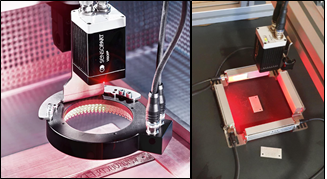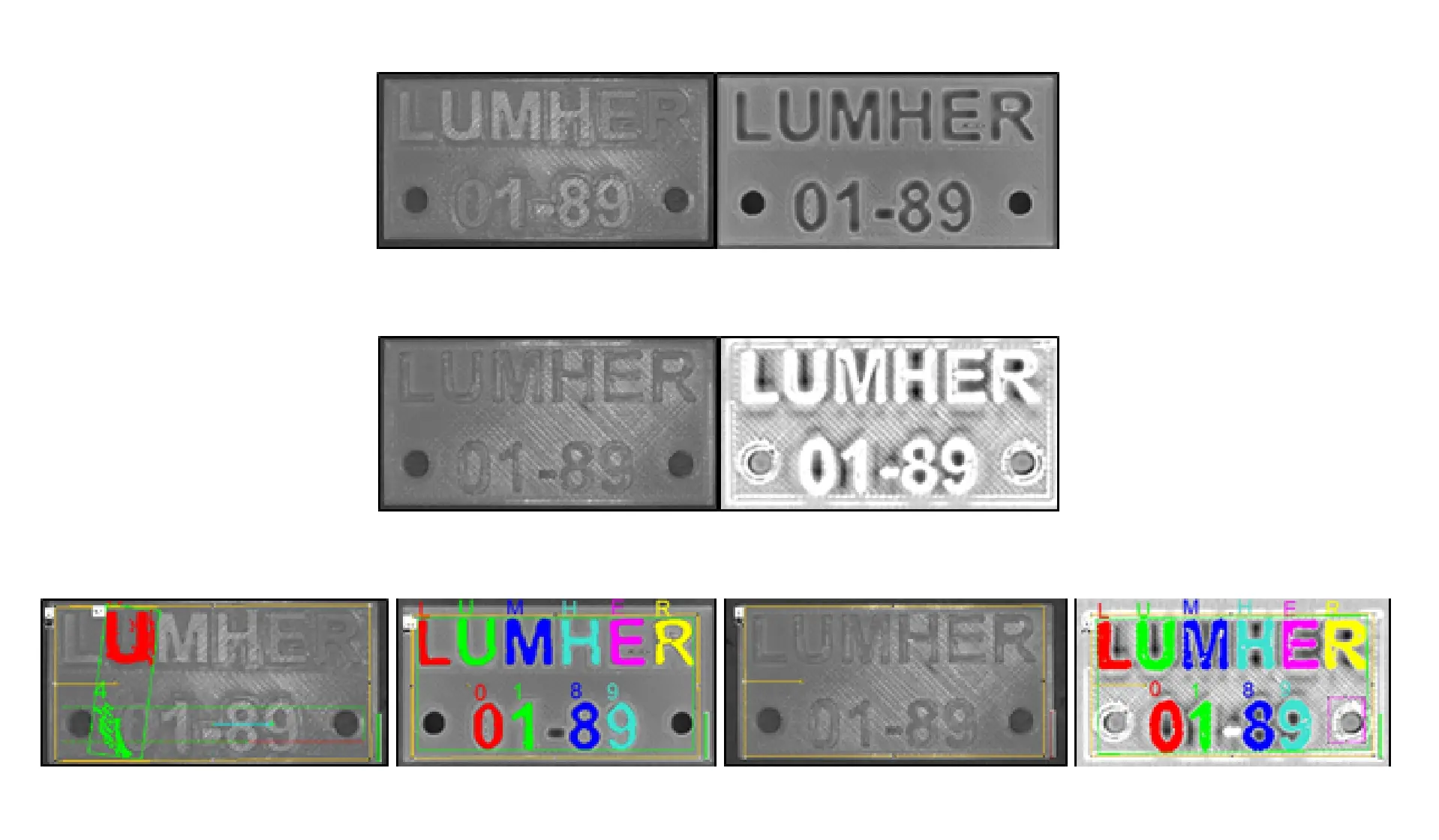Lumher illumination especially for OCR

Getting started

One of the tools that facilitates our work in this type of projects is the use of pre-filters (available in the Smart camera Sensopart from the Advanced model) such as Sobel, Dilation, Erosion, Multiplication and Inversion filters among others, which help us to obtain an image with higher contrast by sacrificing cycle time. However, in some projects, either by the material of manufacture of the part or the cycle time required, we can not use this type of tools, so we have to look for the solution in a special tool found in the All-ROUND cameras, the Multi-Shot.

Discover the multi-shot
Multi-shot is a feature of the Sensopart ALL-ROUND cameras, which allows 4 photographs to be taken in sequence and combined into one, each of these 4 photographs is synchronized with the lighting of a quadrant of the luminaire, obtaining maximum contrast between elements that, although they are of the same material, have relief.
From Lumher, we have developed a perimeter luminaire compatible with the Multishot system of Sensopart, this luminaire, created from the current product P4D, allows the orientation of each of the segments independently, increasing the flexibility and potential of the tool and synchronizing the lighting of each of the sectors with the Smart Camera.
Practical case
 As can be seen in the image above, the camera takes four photographs coordinated with the lighting of each of the quadrants of the luminaire. In this way, it can detect where there is a relief by analyzing the contrast between lights and shadows, enhancing this difference and joining the four photographs into a single one by means of different logarithms that can be selected through the interface to obtain the best result.
As can be seen in the image above, the camera takes four photographs coordinated with the lighting of each of the quadrants of the luminaire. In this way, it can detect where there is a relief by analyzing the contrast between lights and shadows, enhancing this difference and joining the four photographs into a single one by means of different logarithms that can be selected through the interface to obtain the best result.
As a result, a substantial increase in contrast is obtained in the elements with relief, as well as homogeneity of light, significantly reducing the brightness, making it possible to read characters.
The cycle times of this example are around 0.5s, which allows a reading of about 7,200 units/hour, the reliability in reading characters is over 95%, which ensures a robust reading.
The cycle times of this example is around 0.5s, which allows a reading of about 7,200 pcs/hour, the reliability of reading characters is above 95%, which ensures a robust reading.

Our solution
We encourage you to take a look at the lighting products specially designed for artificial vision, where you will find from front lighting through Rings, perimeter lighting and backlight, we also have different wavelengths and polarizing filters integrated into the product to avoid any kind of glare.
Additionally, the entire range of vision has different operating modes (continuous, pulsed and strobe) without the need for a controller to ensure the necessary light in any type of project.
If you have any questions or want more information about the type of lighting we can offer do not hesitate to contact us and we will be happy to help you,
See you in the next blog entry!
Publicaciones destacadas